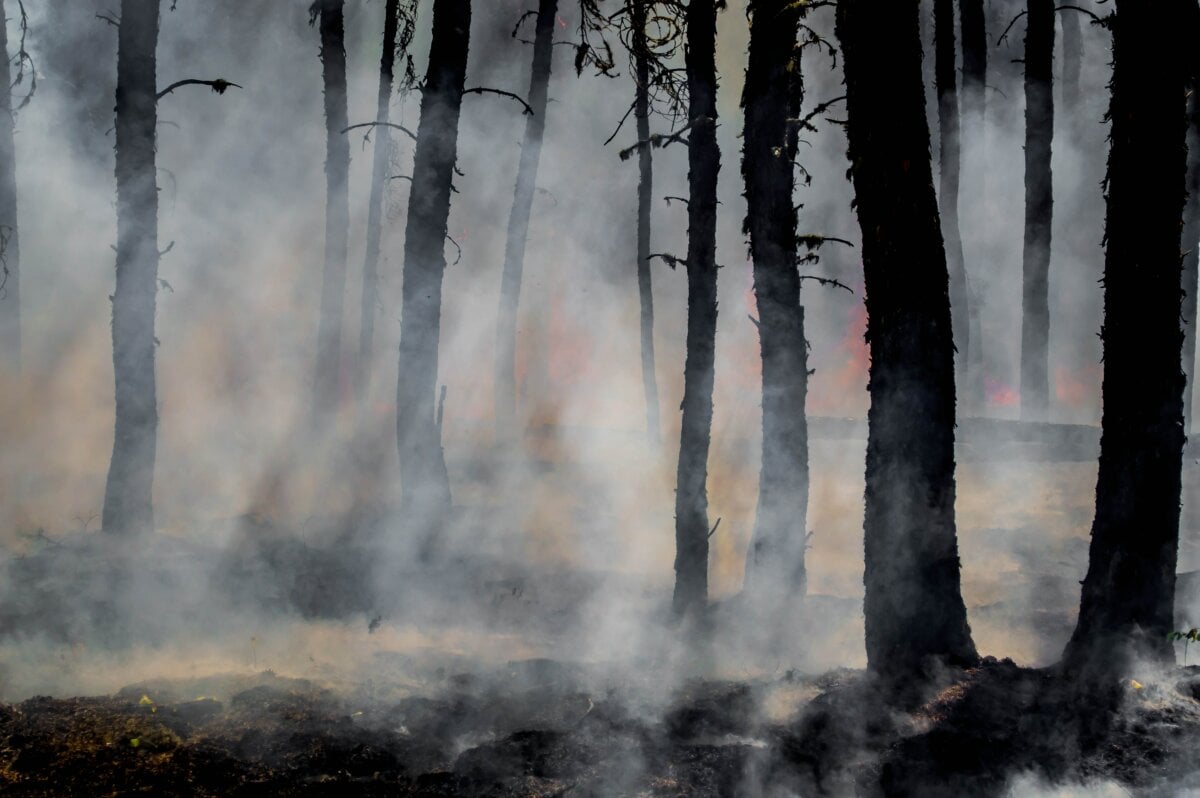In Canada, 41% of cities had annual PM2.5 levels more than twice the WHO guideline, with 11% exceeding it threefold, finds the latest World Air Quality Report released by IQAir, a Swiss technology company.
The 6th Annual World Air Quality Report highlights alarming levels of pollution across the globe.
Analyzing data from over 30,000 monitoring stations in 7,812 locations across 134 countries offers a comprehensive overview of the state of air quality worldwide, focusing on PM2.5 levels (fine particulate aerosol particles measuring up to 2.5 microns in diameter).
Canada’s Air Quality:
The report finds that the Canadian wildfires from May to October 2023 played a significant role in the country’s air quality, with PM2.5 levels in Alberta surging almost ninefold in May compared to 2022.
For the first time, Canada exceeded the United States in regional pollution levels, with an annual PM2.5 concentration of 10.3 µg/m³.
In Canada, 41% of cities had annual PM2.5 levels more than twice the WHO guideline, with 11% exceeding it threefold.
Ottawa with a PM2.5 level of 9.7 µg/m³, ranked 86th among the world’s 117 capital cities in terms of air quality.
Fort McMurray ranked worst with PM2.5 air pollution levels at 22.8 µg/m³ and Prince George lowest at 14.1 µg/m³ among top 15 cities in North America with the worst air quality.
Most Polluted Cities in North America
| Rank | City | 2023 PM2.5 (µg/m³) |
|---|---|---|
| 1 | Fort McMurray | 22.8 |
| 2 | Peace River | 22.4 |
| 3 | Yellowknife | 20.8 |
| 4 | Fort St. John | 18.7 |
| 5 | Fort Saskatchewan | 16.8 |
| 6 | Spruce Grove | 16.8 |
| 7 | Edmonton | 16.6 |
| 8 | St. Albert | 15.8 |
| 9 | Sherwood Park | 15.7 |
| 10 | Saskatoon | 15.5 |
| 11 | Camrose | 15.3 |
| 12 | Cold Lake | 14.8 |
| 13 | Leduc | 14.8 |
| 15 | Prince George | 14.1 |
Global Findings:
- Only seven countries met the WHO’s annual PM2.5 guideline of 5 µg/m³ or less, including Australia, Estonia, Finland, Grenada, Iceland, Mauritius, and New Zealand.
- The most polluted countries were Bangladesh (79.9 µg/m³), Pakistan (73.7 µg/m³), India (54.4 µg/m³), Tajikistan (49.0 µg/m³), and Burkina Faso (46.6 µg/m³), all significantly exceeding WHO guidelines.
- A staggering 92.5% of the countries surveyed surpassed the WHO’s air quality threshold
According to IQAir, Northern America is the most extensively monitored region, with 3,242 cities included, representing 40% of the global cities in the report. Non-government-operated air quality monitors were crucial in monitoring the progression of fire and smoke across the region, contributing significantly to the real-time data.









